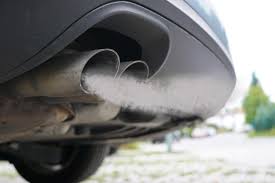3VZFE VS 1MZFE
3VZ-FE VS 1MZ-FE Debate!
A 3VZ-FE VS 1MZ-FE
Introduction
The Toyota 3VZ-FE and 1MZ-FE are two notable V6 engines that represent different stages in Toyota’s engineering evolution. Both displace 3.0 liters and were used in various Camry, ES, and other Toyota/Lexus models, but they differ significantly in design, weight, performance, and refinement. The 3VZ-FE was produced from the early 1990s, while the 1MZ-FE carried Toyota’s V6 lineup into the 2000s. Examining their engineering, performance, and aftermarket potential highlights Toyota’s transition from durable but heavy engines to more efficient and modern designs.
Design and Engineering
The 3VZ-FE is an iron-block, aluminum-head engine, known for its ruggedness and ability to withstand significant abuse. It features dual overhead cams and a relatively narrow 60-degree V6 layout, but its iron block makes it heavy by modern standards. In contrast, the 1MZ-FE was designed with a lightweight all-aluminum construction, shedding significant weight compared to the 3VZ-FE. It also introduced improvements in intake design and friction reduction, reflecting Toyota’s focus on efficiency and refinement.
Performance Characteristics
The 3VZ-FE produces around 185–200 horsepower and 190–200 lb-ft of torque, depending on the application. It has a reputation for solid midrange torque and durability, though it feels less refined at high RPMs. The 1MZ-FE, depending on year and whether it includes Toyota’s VVT-i system, produces 190–210 horsepower and 200–220 lb-ft of torque. The lighter block and improved design make it smoother, more responsive, and slightly more fuel-efficient, appealing to everyday drivers seeking comfort alongside power.
Reliability and Common Issues
Both engines are regarded as reliable, but each has its quirks. The 3VZ-FE is well-known for head gasket issues in some vehicles due to design flaws and overheating risks. However, once repaired, the iron block provides long service life. The 1MZ-FE has fewer gasket problems but suffers from oil sludge buildup in earlier models if oil changes are neglected. Toyota later issued fixes and recommendations to address this issue. Overall, both engines can last well beyond 200,000 miles with proper maintenance.
Aftermarket Support and Tuning Potential
Enthusiasts recognize the 3VZ-FE for its strength in boosted applications. Its iron block can handle turbocharging and higher compression builds with the right modifications, though aftermarket support is not as vast as more common Toyota engines like the 2JZ. The 1MZ-FE, while more refined, is less favored by tuners due to its aluminum block and limited tolerance for extreme boost. That said, it benefits from bolt-on upgrades, intake modifications, and even TRD supercharger kits offered in some applications, which provide reliable performance gains.
Conclusion
The choice between the 3VZ-FE and 1MZ-FE reflects Toyota’s transition from durability-first engineering to lighter, more refined, and efficient designs. The 3VZ-FE is the workhorse, heavy but strong, with a reputation for reliability in demanding conditions and adaptability for performance builds. The 1MZ-FE, on the other hand, is a smoother, more advanced V6 better suited to modern driving demands, offering improved refinement, efficiency, and modest performance gains. Both engines have earned their place in Toyota’s legacy, serving different enthusiasts and everyday drivers in unique ways.




Comments
Post a Comment